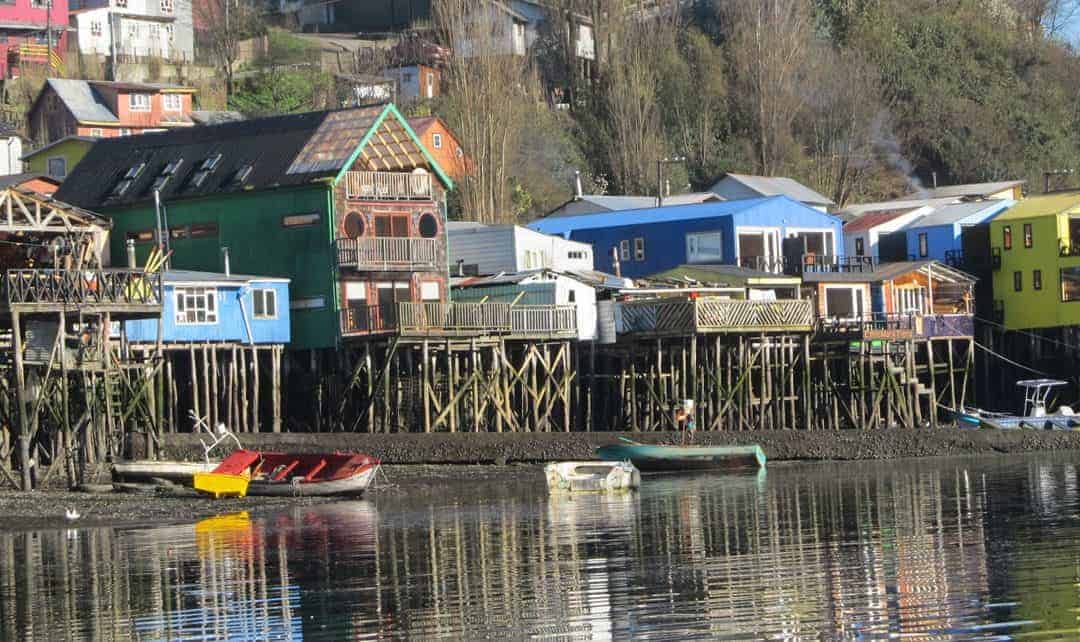It may be part of Chile, but the island of Chiloe moves to its own rhythm.
This large, culturally distinct island has its own myths and legends, craft traditions, weather system (frequent rains) and cuisine. The most famous dish is a stew called curanto, which is traditionally prepared in an underground oven.
Given all this, it shouldn’t be surprising to learn the architecture in Chiloe is a little different too. Most notable here are the palafitos – houses built on stilts along the waterfront. They’re an eye-catching sight, whether at high tide when the colourful wooden houses are reflected in the water, or at low tide, when the metres-high stilts that act as a platform for the homes are exposed.
“They used to be a traditional house of the fisherman,” says guide Isabel Vergara of the tour company Birds of Chile. Others functioned as inns and shops that catered to the logging industry during the lumber boom in the late 19th century.
“Now palafitos are only for those who can afford it,” says Vergara. “Just being on shore is pricey.”
Palafitos were once located throughout the island. But their numbers have declined over the years for various reasons. In the 1940s, a plague that affected the potato crops (a staple on the island) forced many people to migrate from the countryside to the city, leaving their homes behind.
Two decades later, one of the most powerful earthquakes ever recorded hit Valdivia (north of Puerto Montt), which affected Chiloe and far beyond. The 9.4 quake, which occurred on May 22, 1960, produced a tsunami. It claimed 1,655 lives and caused widespread destruction in southern Chile. Palafitos were among the many buildings that were destroyed.
Later they made a comeback and continue to be a characteristic architecture of Chiloe. These days you’ll find them mostly in the island’s capital Castro, Chile’s third oldest city, which was founded in 1567.
Many are constructed of wooden shingles, typical of houses of all types in Chiloe, and can be seen in a variety of colours such as orange, yellow, blue, red, green, grey or brown. They are in four different parts of the city, typically with other houses rising up on the hills behind them.
Fishing is still a way of life on Chiloe and you’ll often see small rowboats or launches tied up to the posts below the palafitos.
Many of the structures have been turned into restaurants and tourism accommodation. Castro has at least three palafito hotels including the Palafito 1326, a boutique property in the Gamboa neighbourhood, one of the few areas to survive the 1960 earthquake and tsunami.
The renovated three-storey building is constructed with brown shingles. It has a large terrace and rooms that look out over the water where black-necked swans and various shore birds can be seen.
Though the architecture is traditional, there are modern comforts and upgrades inside, including thermal heating and insulation, while the floors are made from local wood.
A few doors down is the charming Cazador – a blue-shingled palafito restaurant, known for its innovative local dishes and cosy space with eclectic décor and the island’s endangered fox as its logo.
Whether they’re converted to hotels or restaurants or remain as private homes, Chiloe’s palafitos brighten the local landscape.
Diane Slawych is a contributing writer for REM.


















